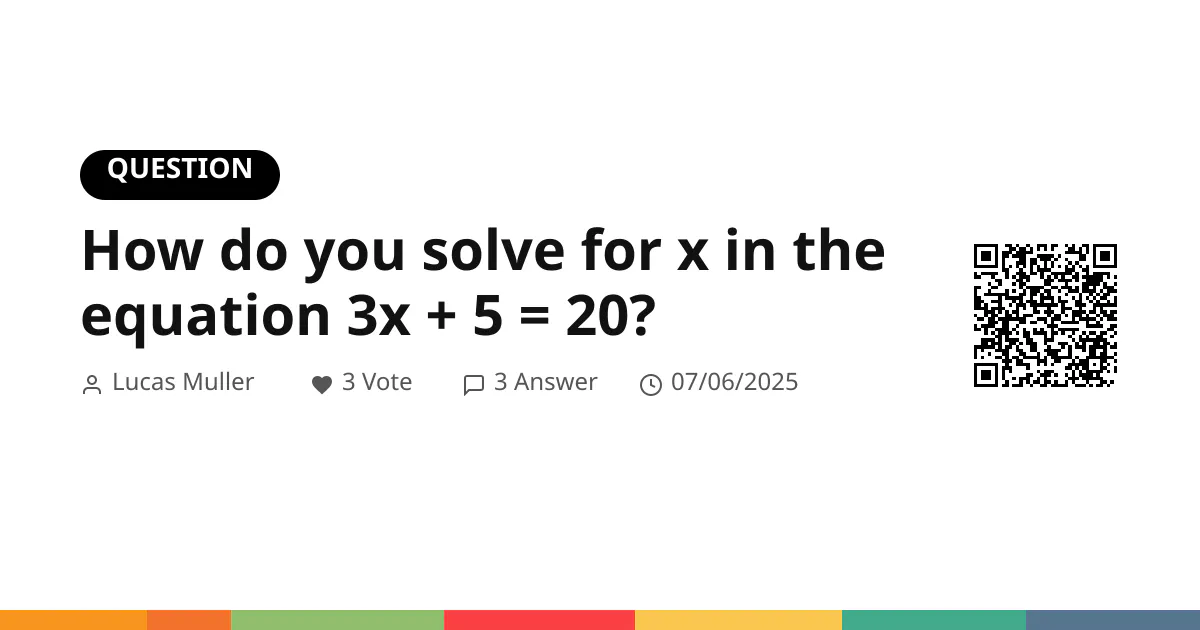
How do you solve for x in the equation 3x + 5 = 20?
I'm helping my son with his homework and we're stuck on this algebra problem: 3x + 5 = 20. I know we need to find the value of x, but I'm having trouble remembering the correct order of operations to get there.
Could someone provide a clear, step-by-step explanation that shows how to solve it? I want to be able to explain the 'why' behind each step, not just give him the answer.
3 Answers
Hi @Lucas_Muller, happy to help! The main goal in this kind of equation is to isolate the variable (the 'x') on one side of the equals sign. We do this by using inverse operations to undo what's being done to x.
Here's the step-by-step breakdown:
Step 1: Get the 'x' term by itself.
Right now, '3x' has 5 being added to it. The inverse of adding 5 is subtracting 5. To keep the equation balanced, you must do the same thing to both sides.
3x + 5 - 5 = 20 - 5
This simplifies to:
3x = 15
Step 2: Solve for 'x'.
Now, 'x' is being multiplied by 3. The inverse of multiplying by 3 is dividing by 3. Again, do this to both sides.
3x / 3 = 15 / 3
This simplifies to:
x = 5
So, the value of x is 5. The key principle to explain is that an equation is like a balanced scale; whatever you do to one side, you must do to the other to keep it balanced.
The answer is x = 5.
A great habit to teach your son is how to check his answer. You do this by plugging the value you found for x back into the original equation to see if it holds true.
Original equation: 3x + 5 = 20
Substitute x with 5: 3(5) + 5 = 20
Calculate: 15 + 5 = 20
Simplify: 20 = 20
Since both sides are equal, the answer is correct. This is a crucial skill that helps build confidence and catch mistakes on tests.
Think of it in reverse order of operations (PEMDAS in reverse). You deal with addition/subtraction first, then multiplication/division.
3x + 5 = 20
1. Undo the addition: Subtract 5 from both sides.
3x = 15
2. Undo the multiplication: Divide both sides by 3.
x = 5